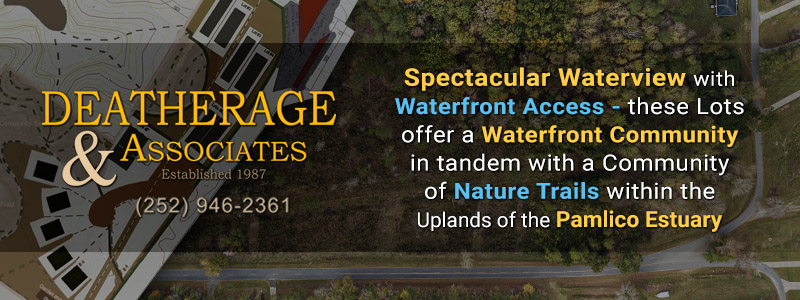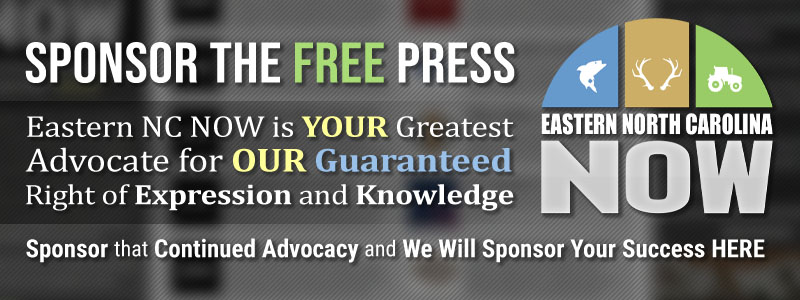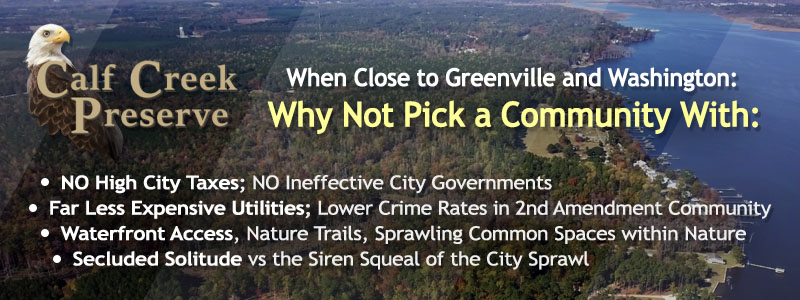Our Community Platform providing Essential Information to Know what is Real
Taxation Without Representation In A Modern Form
Publisher's note: The author of this post is Sarah Curry, who is Director of Fiscal Policy Studies for the John Locke Foundation. She is also a contributor to the Carolina Journal, John Hood Publisher.
RALEIGH Most of us enjoy going on a vacation or two during the year, and that usually involves spending the night in a hotel or rental accommodation. Did you know that you are taxed on that hotel room and have no say about it? This current form of taxation without representation is known as an occupancy tax.
In 1983, the General Assembly passed legislation authorizing counties and municipalities to impose an occupancy tax for the first time in the state's history. The tax was authorized in mostly populous counties like Buncombe, Mecklenburg, Forsyth, and New Hanover, but also included smaller Haywood County. Since that time, there have been over 200 counties and municipalities (PDF) authorized by the General Assembly to levy an occupancy tax.
Even though the tax must be authorized at the state level through a local act in the legislature, only local governments may levy an occupancy tax. Upon authorization from the General Assembly, the local government's governing authority — a city council or board of county commissioners — must pass a resolution formally levying the tax.
Generally this process only includes a public hearing and not a referendum, as is the case with the sales tax. Similar to most local taxes except property tax, the occupancy tax doesn't need to be levied each year in the budget because it remains in place until it is repealed. The only changes that can be made to the tax must be done through either the local governing authority or the General Assembly.
Most of the occupancy taxes in North Carolina are between 3 percent and 6 percent. Brunswick County has the lowest rate at 1 percent, whereas Mecklenburg County/Charlotte has the highest rate at 8 percent and the only one over 6 percent. The extra 2 percent was authorized in 2005 to help finance the NASCAR Hall of Fame museum.
In the 2011-12 fiscal year, total county collections were more than $135 million and municipal collections were more than $30 million. That's a combined amount of over $165 million taken from tourists, business travelers, school groups, or anyone else who stayed in a hotel or rental accommodation in North Carolina during that time.
The collected funds from this tax are not sent to a General Fund for local government use, but are used for specific purposes such as tourism, beach nourishment, or the construction or operation of convention and performing arts centers. While funds are spent on all of the previously listed items, tourism is the major focus of occupancy tax revenue.
When the tax is introduced to a local government for the first time, a local Tourism Development Authority is created. The local TDA then controls spending occupancy tax revenue on tourism promotion or related activities within the county or municipality. During 2011-12, almost $90 million of the collected tax went to Tourism Development Authorities across the state.
When local governments levy an occupancy tax, they think they can fund things within their jurisdiction with money from nonresidents and at no cost to the local population and businesses. Unfortunately, that is not the case.
When a hotel or bed and breakfast posts its nightly rate on the Internet, it is very easy for travelers to compare prices with competing businesses. If an occupancy tax pushes the price of the room to a level that exceeds that of a neighboring county or city, then the traveler will often choose the lower rate. So in this case, the hotel within the higher occupancy tax area might choose to eat the cost of the tax increase to keep its room rates competitive with businesses in neighboring jurisdictions.
Other problems with this tax involve use of the proceeds and who is held accountable. TDAs make decisions about where to spend occupancy tax revenue, yet they are not accountable to voters. While any sales tax increase is put on a ballot for a vote, an occupancy tax increase is not. So not only do out-of-town visitors have no say in this tax, but neither do local businesses that could be negatively affected.
A relevant example is highlighted in my most recent Spotlight report about Haywood County's plans to increase its occupancy tax. The increase would leave Haywood County with the highest rate in the region at 6 percent, and reports from the local TDA show that proceeds from the current 4 percent tax are not used completely each year.
Why does Haywood County need more? If the additional tax is levied, it will be a perfect example of how taxation without representation is still alive and thriving in North Carolina local governments.
Go Back
RALEIGH Most of us enjoy going on a vacation or two during the year, and that usually involves spending the night in a hotel or rental accommodation. Did you know that you are taxed on that hotel room and have no say about it? This current form of taxation without representation is known as an occupancy tax.
In 1983, the General Assembly passed legislation authorizing counties and municipalities to impose an occupancy tax for the first time in the state's history. The tax was authorized in mostly populous counties like Buncombe, Mecklenburg, Forsyth, and New Hanover, but also included smaller Haywood County. Since that time, there have been over 200 counties and municipalities (PDF) authorized by the General Assembly to levy an occupancy tax.
Even though the tax must be authorized at the state level through a local act in the legislature, only local governments may levy an occupancy tax. Upon authorization from the General Assembly, the local government's governing authority — a city council or board of county commissioners — must pass a resolution formally levying the tax.
Generally this process only includes a public hearing and not a referendum, as is the case with the sales tax. Similar to most local taxes except property tax, the occupancy tax doesn't need to be levied each year in the budget because it remains in place until it is repealed. The only changes that can be made to the tax must be done through either the local governing authority or the General Assembly.
Most of the occupancy taxes in North Carolina are between 3 percent and 6 percent. Brunswick County has the lowest rate at 1 percent, whereas Mecklenburg County/Charlotte has the highest rate at 8 percent and the only one over 6 percent. The extra 2 percent was authorized in 2005 to help finance the NASCAR Hall of Fame museum.
In the 2011-12 fiscal year, total county collections were more than $135 million and municipal collections were more than $30 million. That's a combined amount of over $165 million taken from tourists, business travelers, school groups, or anyone else who stayed in a hotel or rental accommodation in North Carolina during that time.
The collected funds from this tax are not sent to a General Fund for local government use, but are used for specific purposes such as tourism, beach nourishment, or the construction or operation of convention and performing arts centers. While funds are spent on all of the previously listed items, tourism is the major focus of occupancy tax revenue.
When the tax is introduced to a local government for the first time, a local Tourism Development Authority is created. The local TDA then controls spending occupancy tax revenue on tourism promotion or related activities within the county or municipality. During 2011-12, almost $90 million of the collected tax went to Tourism Development Authorities across the state.
When local governments levy an occupancy tax, they think they can fund things within their jurisdiction with money from nonresidents and at no cost to the local population and businesses. Unfortunately, that is not the case.
When a hotel or bed and breakfast posts its nightly rate on the Internet, it is very easy for travelers to compare prices with competing businesses. If an occupancy tax pushes the price of the room to a level that exceeds that of a neighboring county or city, then the traveler will often choose the lower rate. So in this case, the hotel within the higher occupancy tax area might choose to eat the cost of the tax increase to keep its room rates competitive with businesses in neighboring jurisdictions.
Other problems with this tax involve use of the proceeds and who is held accountable. TDAs make decisions about where to spend occupancy tax revenue, yet they are not accountable to voters. While any sales tax increase is put on a ballot for a vote, an occupancy tax increase is not. So not only do out-of-town visitors have no say in this tax, but neither do local businesses that could be negatively affected.
A relevant example is highlighted in my most recent Spotlight report about Haywood County's plans to increase its occupancy tax. The increase would leave Haywood County with the highest rate in the region at 6 percent, and reports from the local TDA show that proceeds from the current 4 percent tax are not used completely each year.
Why does Haywood County need more? If the additional tax is levied, it will be a perfect example of how taxation without representation is still alive and thriving in North Carolina local governments.
| Cook Tours Tornado Damaged Areas with Governor McCrory | Carolina Journal, Editorials, Op-Ed & Politics | Analysts: No Knockout Punches In GOP Senate Debates |
Latest Op-Ed & Politics
|
how many of these will come to North Carolina?
Published: Tuesday, April 23rd, 2024 @ 1:32 pm
By: John Steed
|
|
Barr had previously said he would jump off a bridge before supporting Trump
Published: Tuesday, April 23rd, 2024 @ 11:37 am
By: John Steed
|
|
Babis is leader of opposition in Czech parliament
Published: Tuesday, April 23rd, 2024 @ 10:28 am
By: John Steed
|
|
illegal alien "asylum seeker" migrants are a crime wave on both sides of the Atlantic
Published: Tuesday, April 23rd, 2024 @ 9:44 am
By: John Steed
|
|
only one holdout against acquital
Published: Tuesday, April 23rd, 2024 @ 9:01 am
By: John Steed
|
|
DEI now includes criminals?
Published: Monday, April 22nd, 2024 @ 8:33 pm
By: John Steed
|
|
Biden regime intends to force public school compliance as well as colleges
Published: Monday, April 22nd, 2024 @ 1:55 pm
By: John Steed
|
|
clamps down on oil drilling in Alaska
Published: Monday, April 22nd, 2024 @ 9:09 am
By: John Steed
|
|
plan put in place by Eric Holder
Published: Monday, April 22nd, 2024 @ 7:38 am
By: John Steed
|
|
prosecutors appeal acquittal of member of parliament in lower court for posting Bible verse
Published: Sunday, April 21st, 2024 @ 9:14 am
By: John Steed
|
|
Biden abuses power to turn statute on its head; womens groups to sue
Published: Friday, April 19th, 2024 @ 8:28 pm
By: John Steed
|
























